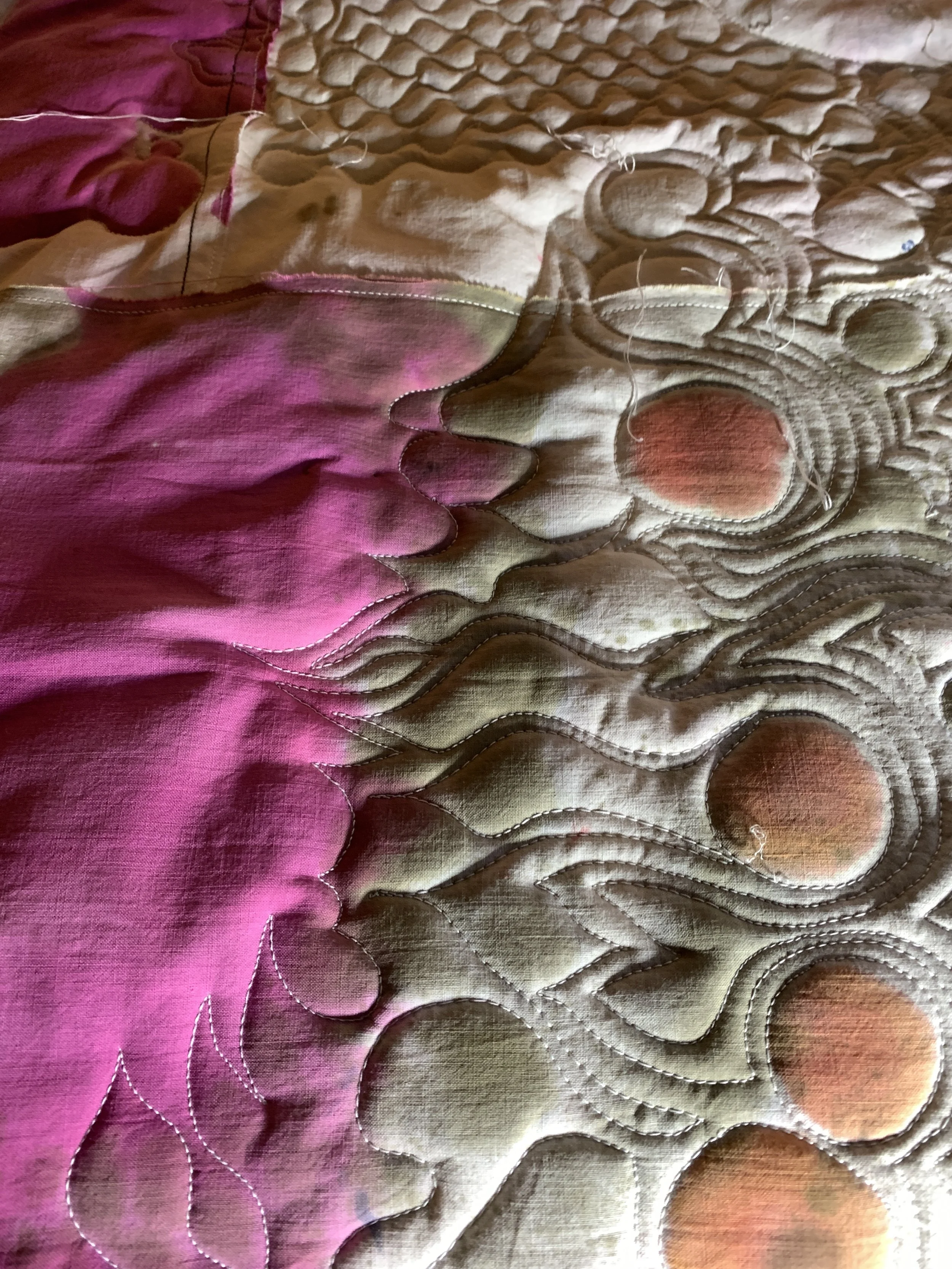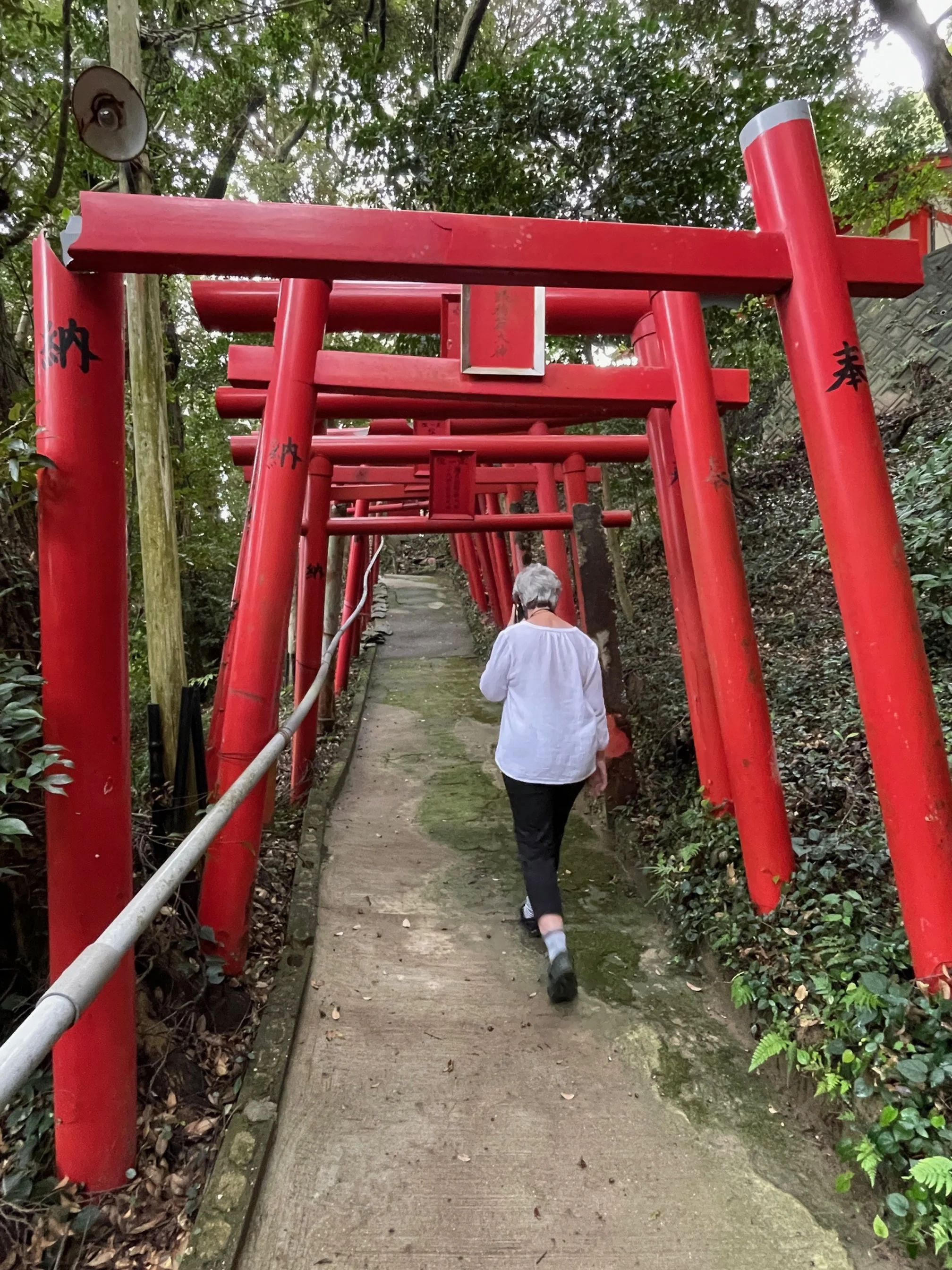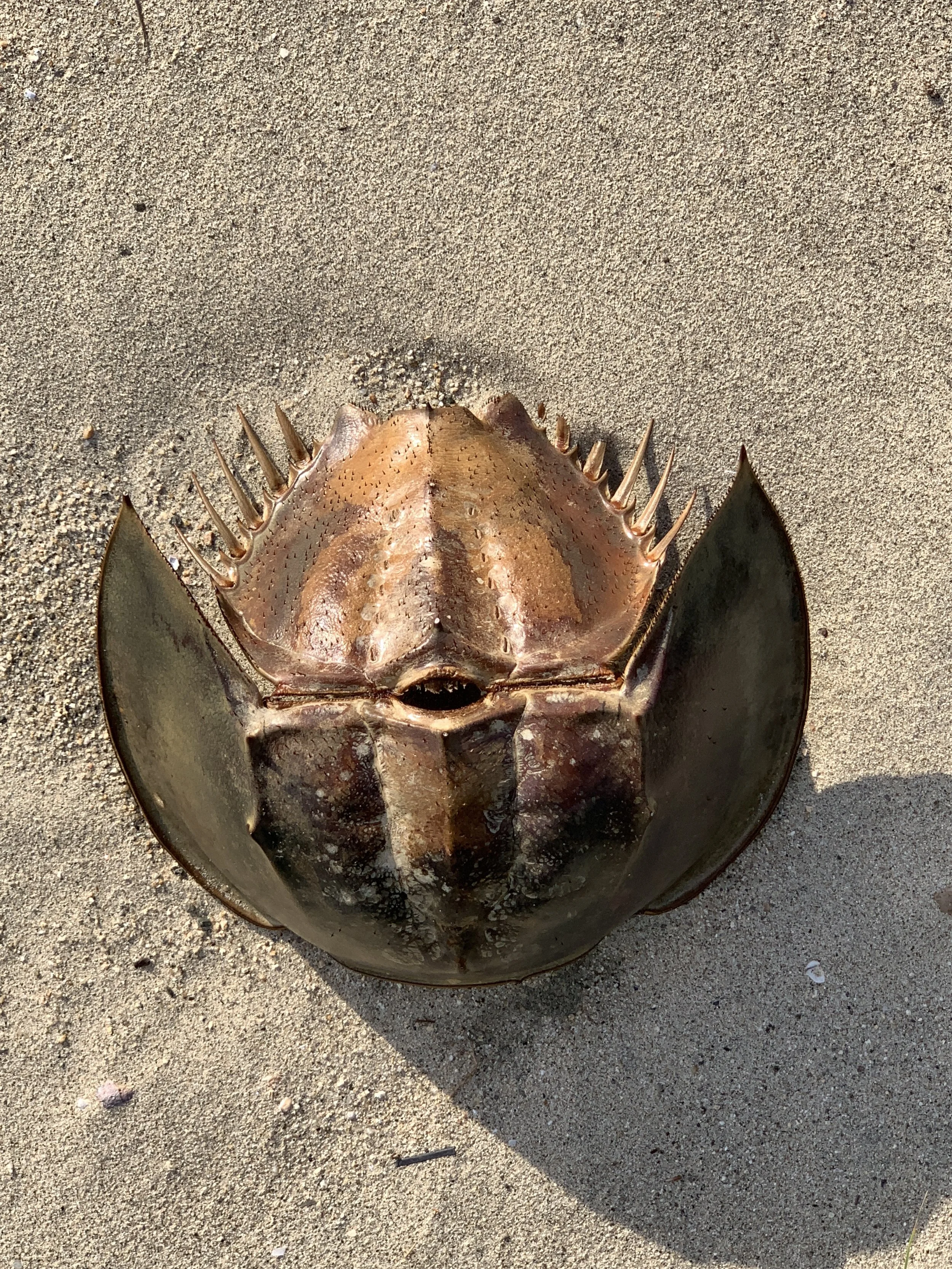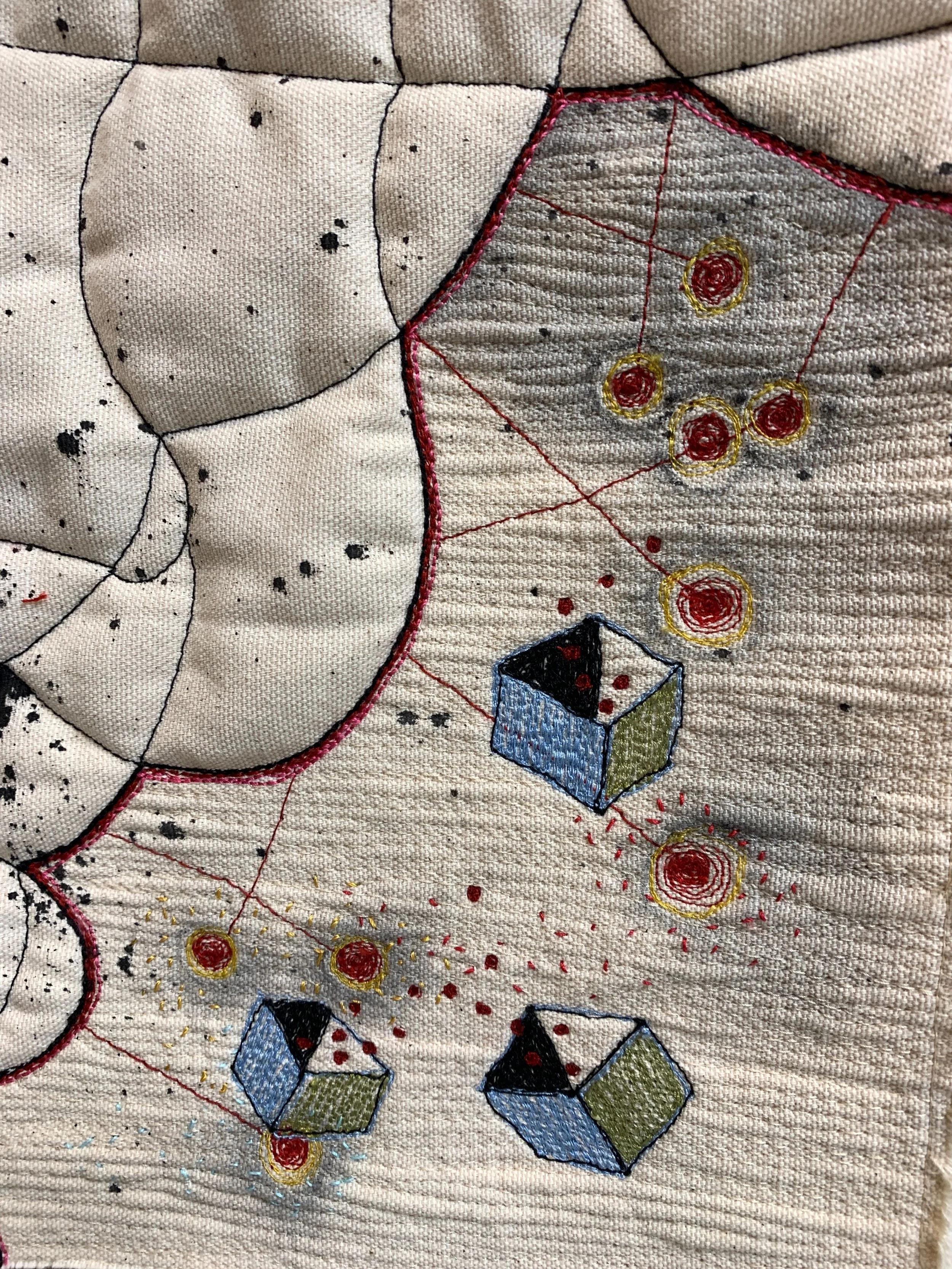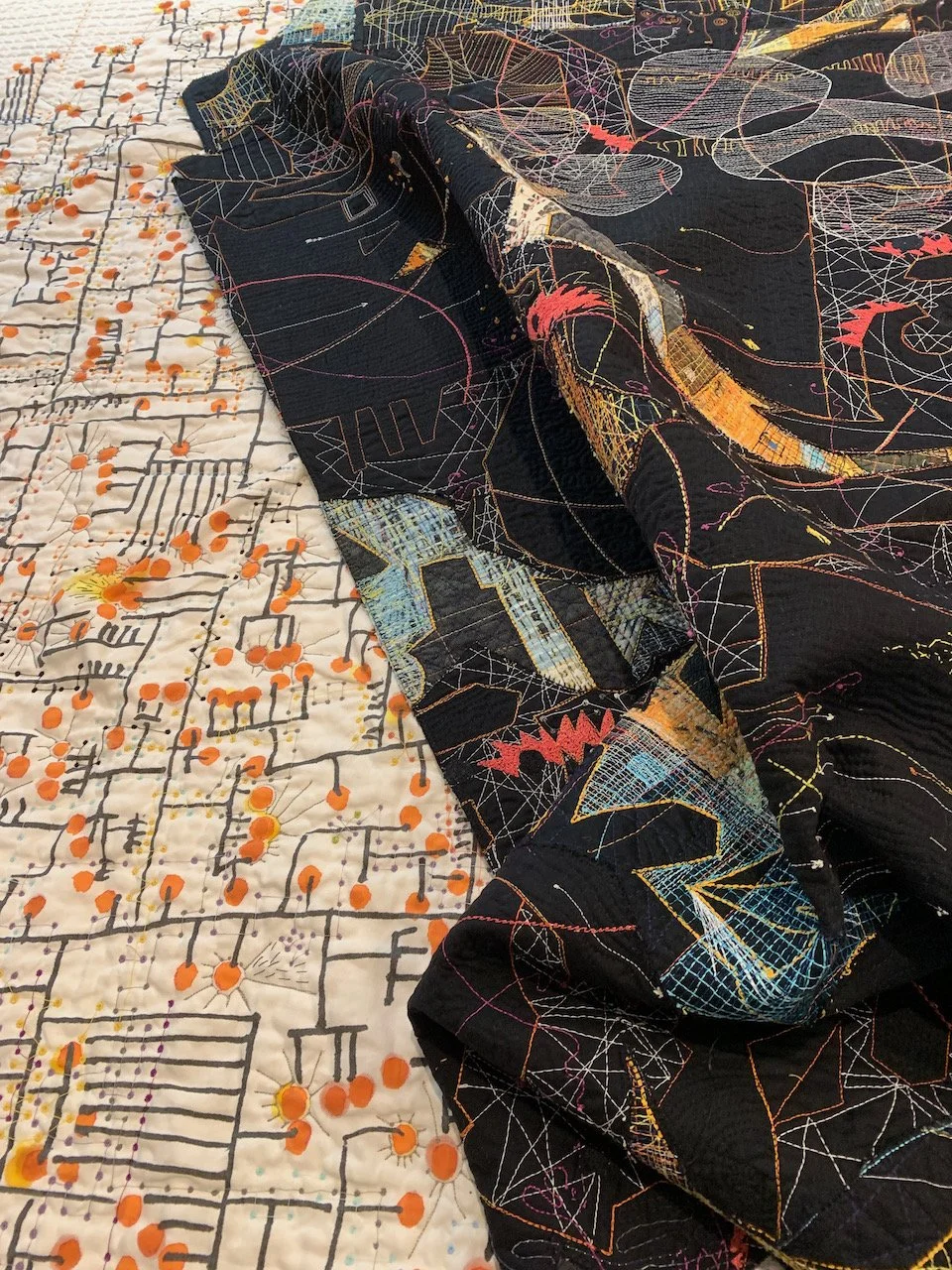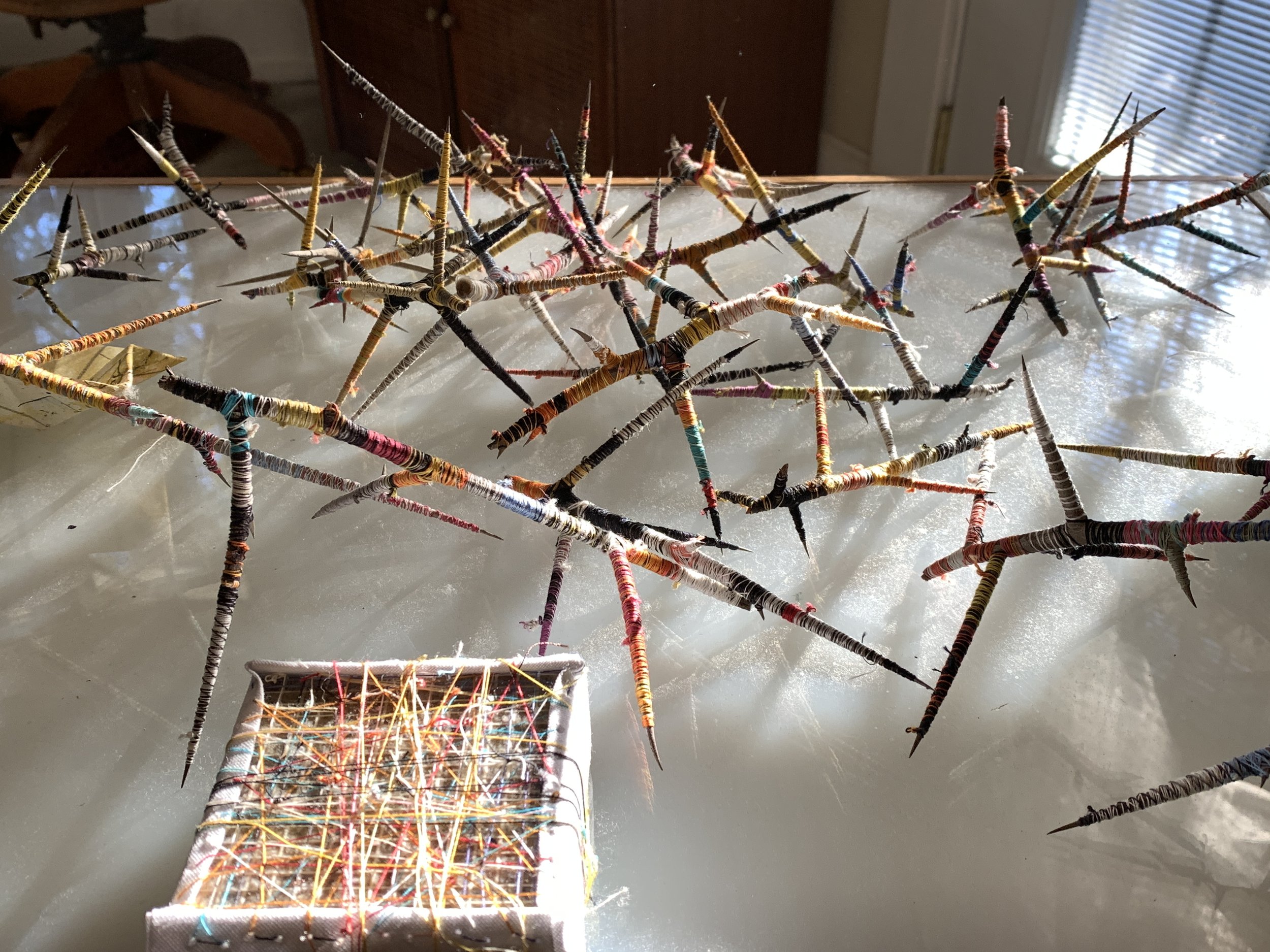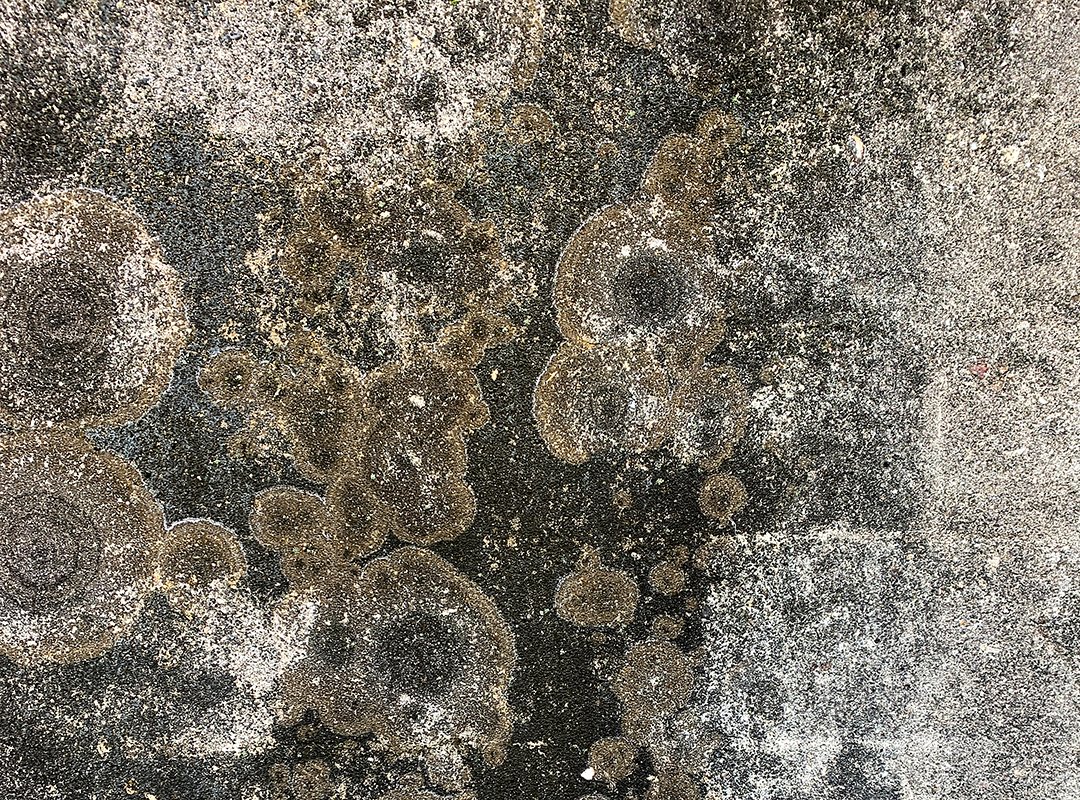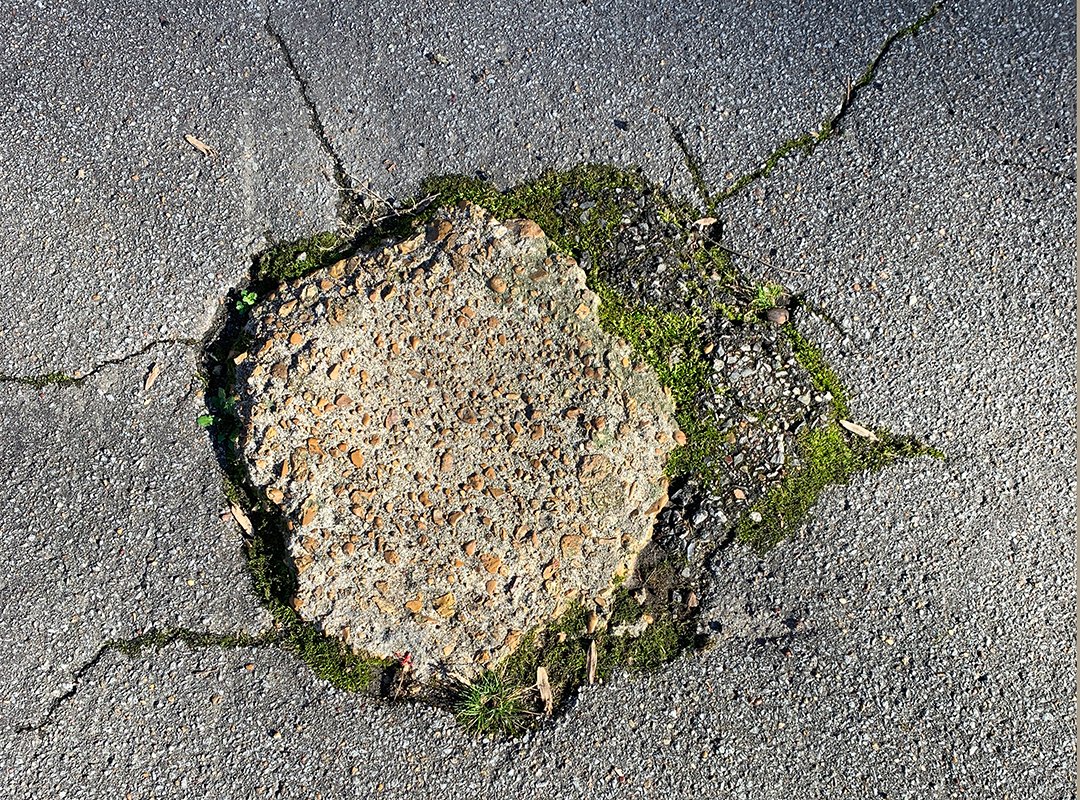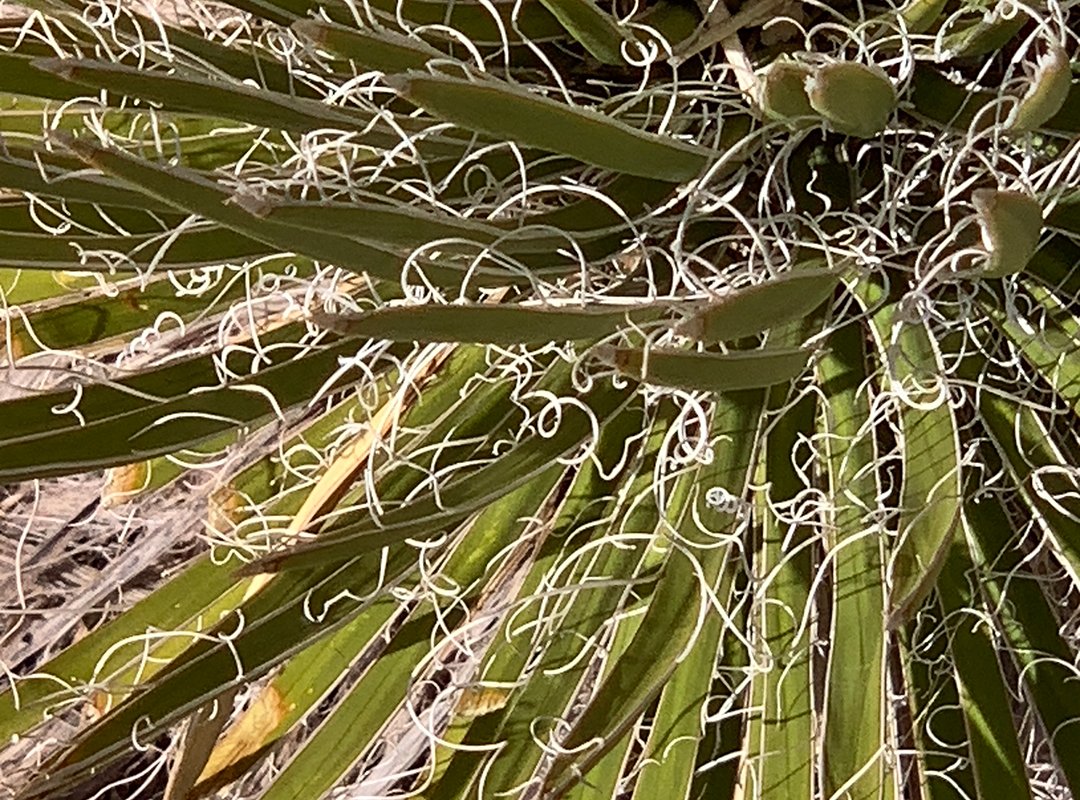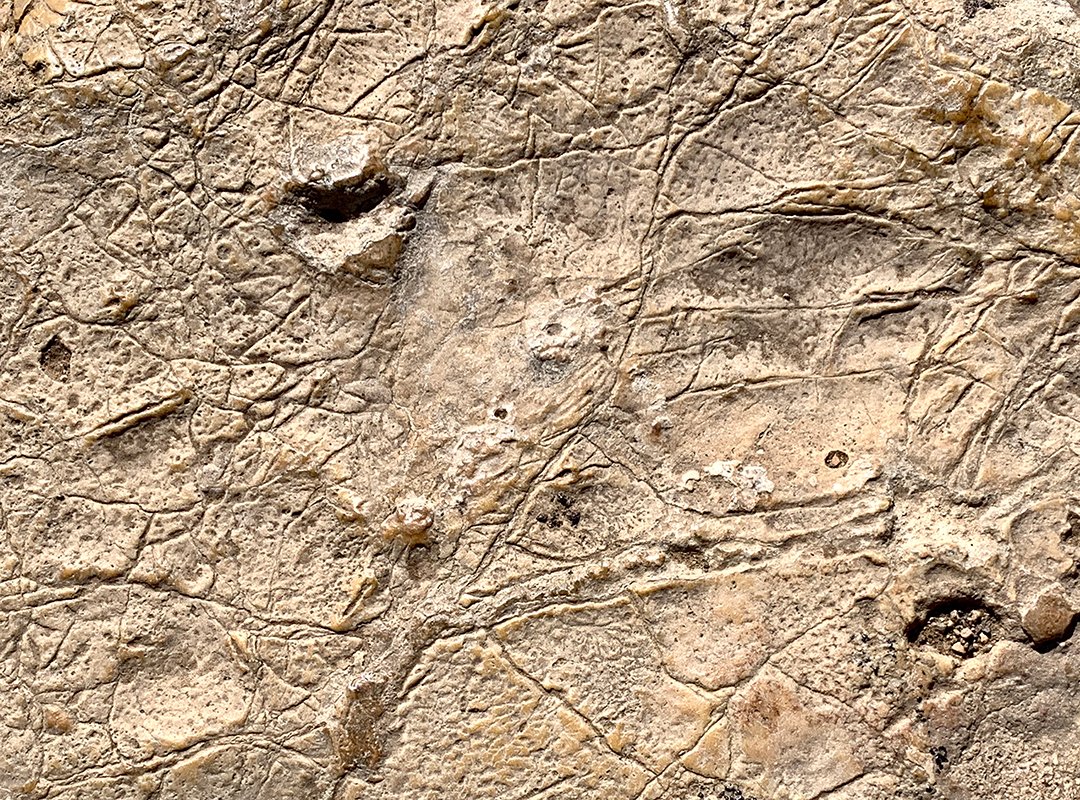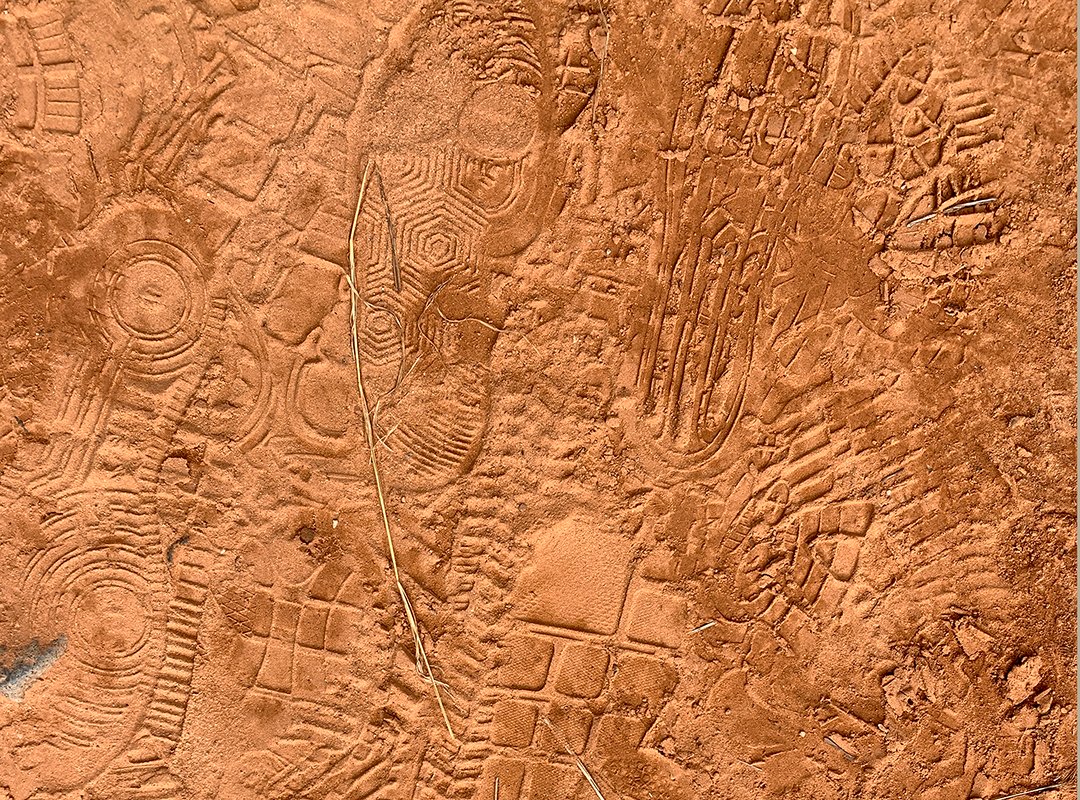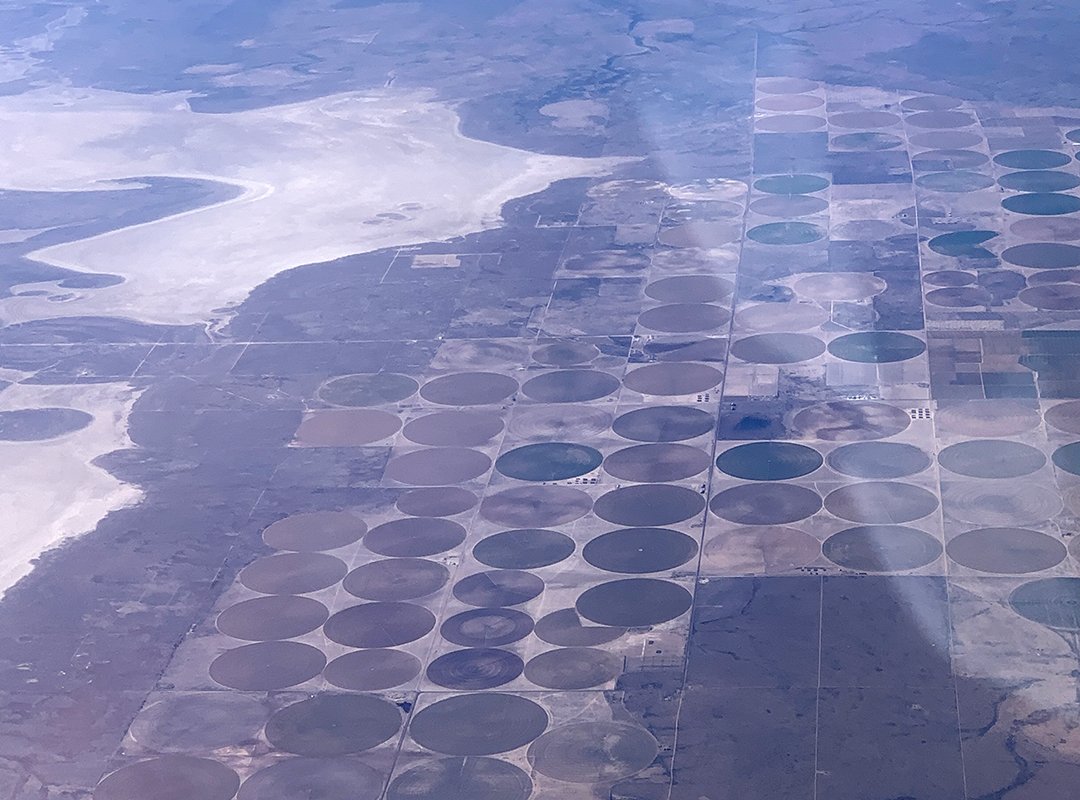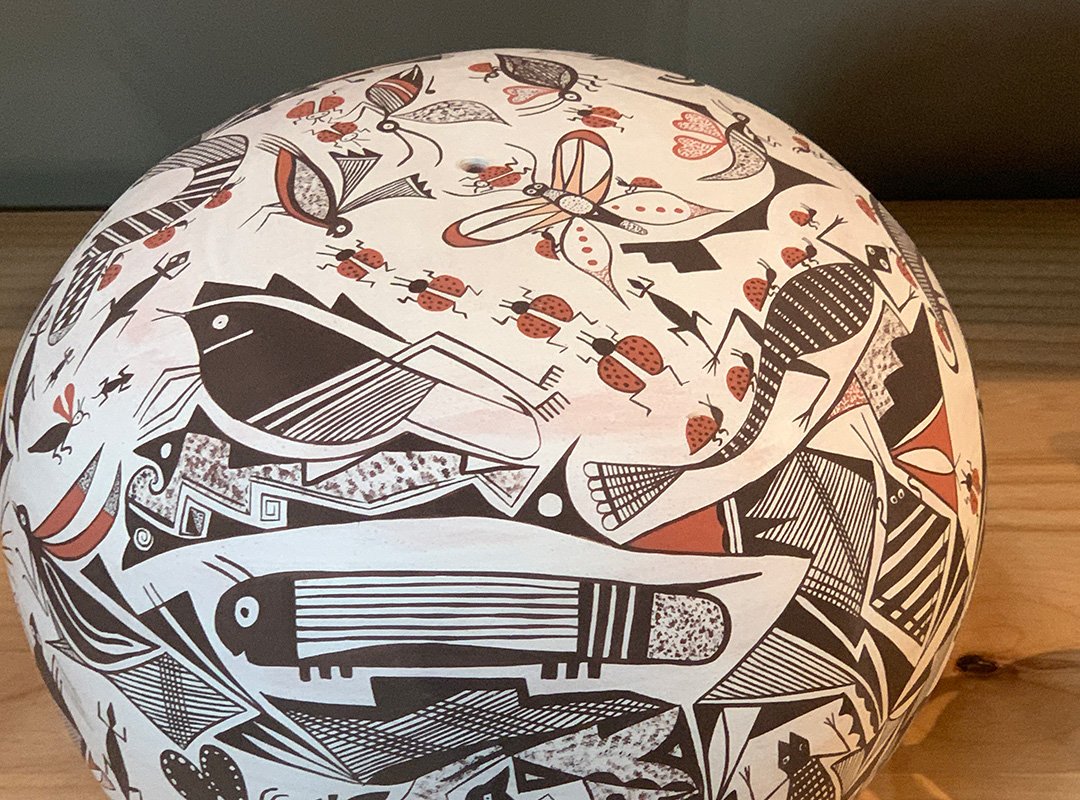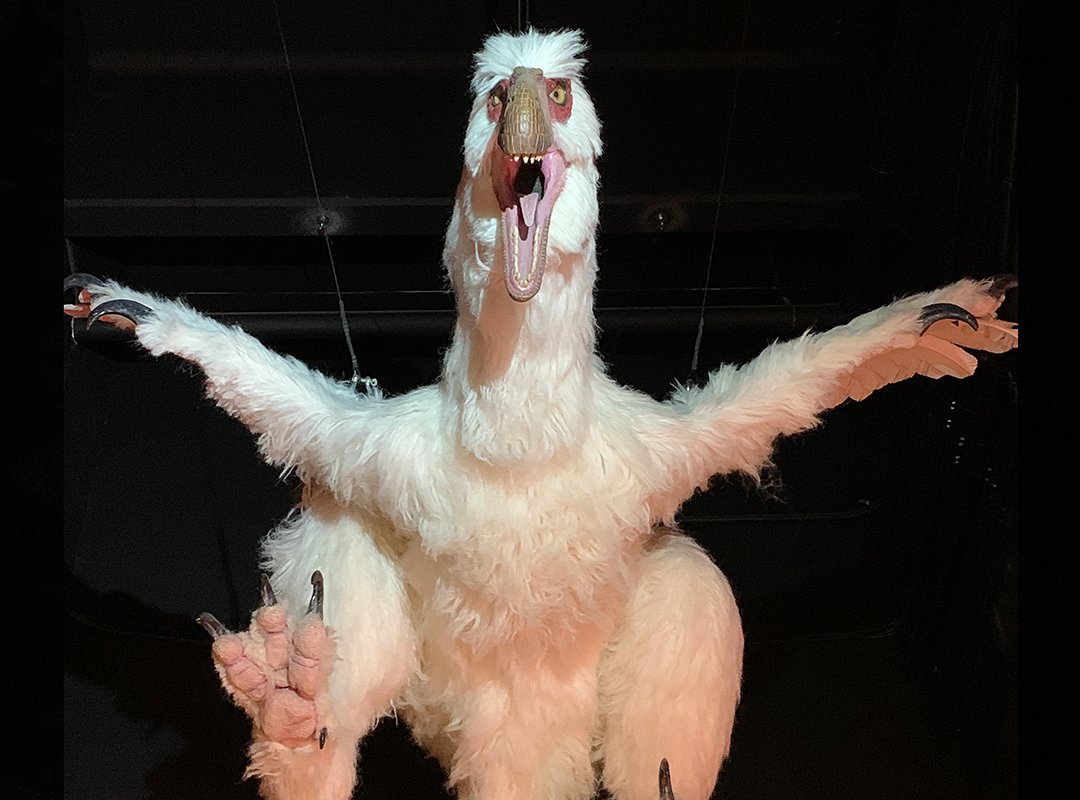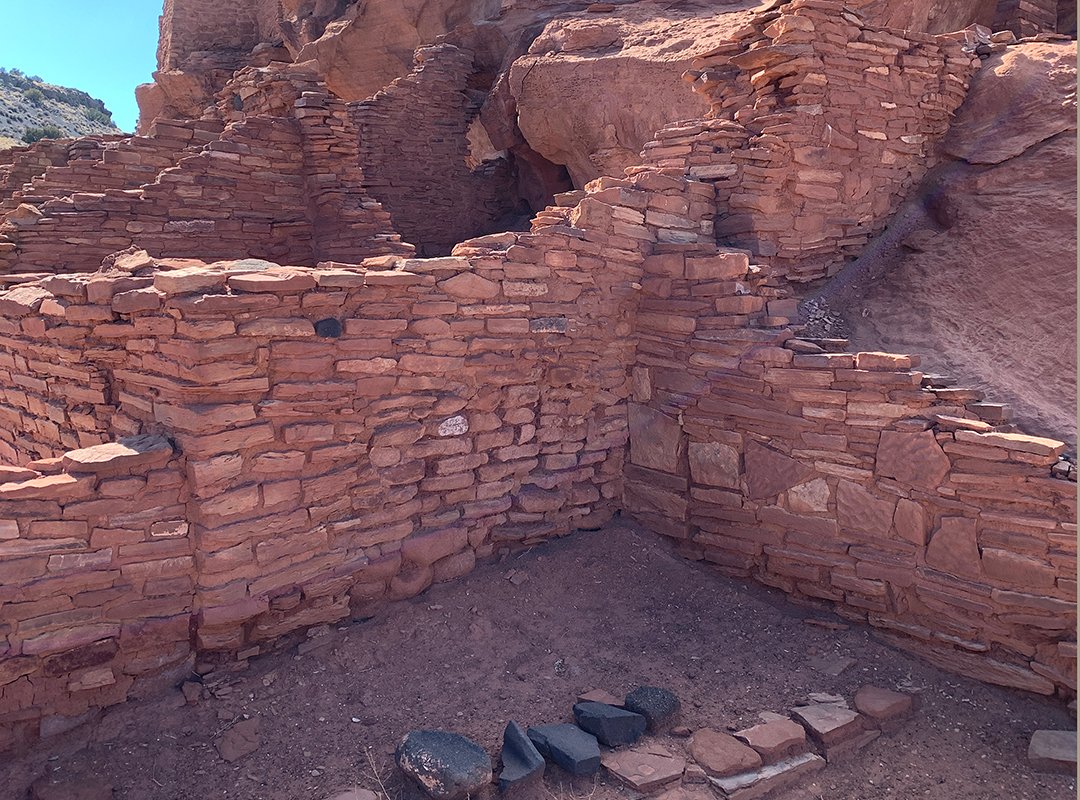I came home from my residency in Japan with a bucket of ideas. And a bad cold. Despite the sniveling, snorting and hacking I was intent on making progress on works that I had started as well as new works brewing in my mind. The cold won. And I floundered, frustrated. It was another lesson in expectations vs. reality.
The first task was to preserve the work I did in Japan. Like this 18.5 foot drawing on a rice paper scroll. I fused the paper to muslin and now I am considering a wooden roller for it. It’s tricky. I am moving slowly to resolve the challenge.
I left for the residency with a piece on the wall that was unfinished. It’s a challenge in pattern and color. (see previous post) And after six weeks thinking in black and white I had to put it in the “works-in-NO-progress” pile. It just served to frustrate me rather than inspire.
I’m not really good at giving up. But the minute I did that with that piece I felt a rush of adrenaline that gave me permission to think about new things. And open up that bucket to start fresh.
When I am in a quandary about how to move forward I wrap thorns from a black locust tree with discarded thread. Or I fold fabric scraps into neat piles. It serves to slow me down so that I can clear my mind of distractions.
Giving myself permission to fail is something that takes practice. My expectations are high. I am impatient. Judgmental. And distracted. There are not enough hours in my day to accomplish what I want to do. I need to go back to the idea that it is all about the process and not about the product.
Stream of consciousness stitching on found fabric.
After folding a couple of shelves of fabric, reorganizing my tool closet and wrapping some thorns I found this piece of drop cloth that I had saved from a particularly colorful day of playing with ink. It is an amorphous, non-figurative mush of color on a used and reused scrap of sheeting. It pleases me. And challenges me to play. So that is what I am doing. Playing. Responding. Giving my time to that space of no expectations.
Winter is here. A time to notice the shortened days. A time to pay attention to the skeletons of trees.
Join Me!
You might notice that I have a number of scheduled workshops here on this journal page. I’ll be at the Santa Fe Madeline Island School of the Arts in March. The Alegre Retreat in Colorado in April. The Columbia FiberArts Guild in June. Quilting by the Lake in Geneva, NY in July. The Woodland Ridge Retreat in Menomonie, WI in August. Stitch in Durango, CO in September. And the Stitchin’ Post in Sisters, OR in September.





